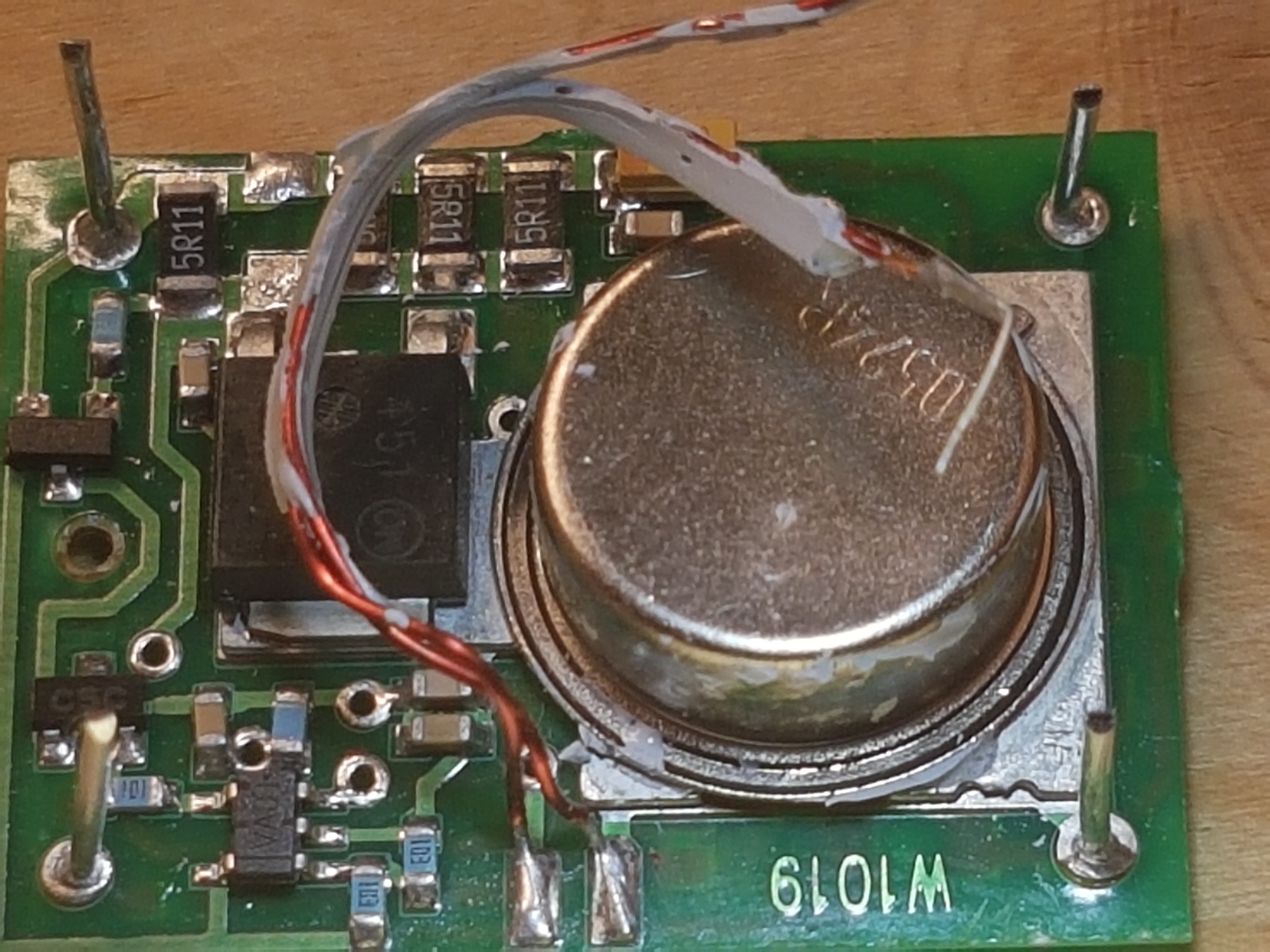BLILEY NV47M1008 Destructive Teardown Recently, I purchased a Tindie OCXO 10 MHz board that was fully populated and calibrated. My intention was to use it to supply not only the 10 MHz square wave the board generated, but also to feed the square wave into a buffer/filter circuit I designed, which outputs a 10 MHz sine wave. While testing the circuit, I inadvertently touched the Tindie board to part of a power supply generating 5V and 12V from 110 AC. This catastrophically damaged the board. After interacting with Chris from Analysir, which developed the board, I determined that the damaged component on the board was the OCXO module, which in my case was a BLILEY NV47M1008. I purchased a new Tindie board and also bought off Ebay an additional BLILEY module. This meant I had no use for the damaged BLILEY module. Consequently, I decided to take it apart. I knew from the outset that disassembling the module was going to be a destructive teardown, since it encased its electronics in a sealed metal case. So, I decided to document the teardown photographically and put the pictures up on this web site in case others were curious what the internals of such a module comprised. Figure 1 shows the bottom of the module with 5 pins (only 4 are functional): 2 serving to supply 5V and Ground; 1 returning the 10MHz square wave; and 1 accepting a reference voltage (Vref) that is used to fine tune the frequency of the output - see NV47M1008 spec. (Note: the 4 blue dots on the bottom are not pins. They are part of the bottom plate itself. The 5 pins are on the left and right of the plate near the edge.) Figure 1 - Bottom of BLILEY module. Figure 2 shows the bottom of the module after I used a Drexel tool with a cutting disk to remove the seal between the bottom plate and containing box. The seal was not solder; rather it was a weld, which required significant pressure to remove (I destroyed one cutting disk during the process). Figure 2 - Weld between bottom of module and metal can removed. Figure 3 shows the board located on the other side of the module bottom plate. Note the insulation in the cap that keeps the board from electrically contacting its metal top. Also, just visible, is insulation between the board and the bottom plate. Figure 4 shows more clearly the insulation between the PC board and the bottom plate. Figure 4 - Insulation between bottom plate and PC board. Figure 5 shows the same substructure with the insulation removed, revealing the components on the PC board. Figure 5 - Insulation between PC board and bottom plate removed. Figure 6 shows the top of the PC board. Note the oven can (the circular device labeled 052r4 on top and with white sides comprising potting material). The chip next to it labeled J117 might be a MJD117 (thanks to Damianos, who first proposed this on the EEVBlog here), which is a darlington pair. Chris noted that there is a lot of filtering on the board (see next figure). Figure 6 - Top of PC board Figure 7 shows the bottom of the PC board. There is a 6-pin chip labeled OCV3 that may be a Bliley proprietary part, since I could find no information about it on the web. However, the name suggests something like "Oven Controlled Voltage ..." (Oven Controlled Voltage 3.3V - a voltage regulator?) There are also chips labeled LB40 (5 pin) and C1L (3 pin), .3 C (3 pin) and EB1 (3 pin). The LB40 is a MIC5205-4.0 low noise low drop out voltage regulator (noted by gamalot on the EEVBlog forum here). The others are unknown. Figure 7 - Bottom of PC board. Figure 8 shows the oven can with the white potting material removed. This material held the two copper wires to the body of the can. The thin wires at the end probably connected the copper wires to a thermistor, which was destroyed when I removed the potting material. Figure 8 - Potting material removed from Oven Can Figure 9 shows the area between the PC board and the can. Just barely visible between them are pins that are soldered to pads on the bottom of the board. Figure 9 - Area between can and PC board. Is the device labeled J117 a mosfet (2SJ117) or a PNP darlington pair (MJD117)? Figure 10 shows the device up close. Notice the middle lead is either broken off or missing. The schematic of a MDJ117 in the DPAK case 369C shows the middle pin missing, as in the picture. However, the code above the MDJ117 designation (451) comprises 3 numbers (YWW), but according to the spec, it should be 4 numbers (AYWW), where A signifies the assembly location, Y the year and WW the work week. In addition, the middle lead looks like it is sheared off, which would suggest it is not the DPAK case. So, it is probably the DPAK-3 369D case with the middle lead sheared off. Since the device is in circuit, measuring the voltages across the leads to attempt to distinguish between a 2SJ117 or MJD117 is problematic. But, for the record here are values (using a DMM in diode mode):
Figure 10 - J117 up close. |










